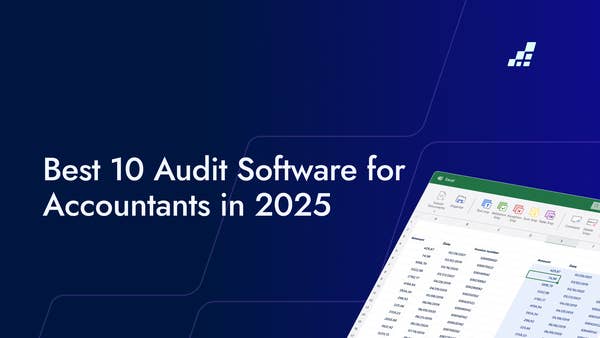- /
- Blog
How to Automatically Verify Audit Samples
.png?width=1400&quality=90&format=avif&crop=fit)
How to Automatically Verify Audit Samples
Enter automation – a game-changer for audit sample verification.
This article explores the role of audit samples, delves into the transformative power of automation, and outlines its step-by-step implementation.tem.
Understanding Audit Samples
Let's start by digging into the automation aspect. But before we get too deep, it's important to grasp the concept of audit samples. In simple words, these are like snapshots of transactions or records that auditors pick to take a closer look at. They're like the magnifying glass used to check the honesty and correctness of financial statements.
Rather than going through every single piece of data, auditors zoom in on a smaller chunk. This approach lets them make judgments about how good the entire batch of financial records really is.
What are Audit Samples?
When auditors audit, they can't possibly go through every single record – time and resources don't allow for that. So, they turn to these audit samples to get the gist of the whole bunch. Picking these samples involves using fancy statistical methods to make sure they're a fair representation of the whole shebang.
For instance, imagine an auditor checking out the financial records of a retail company. They might just take a look at a bunch of sales transactions to make sure the revenue is being recorded accurately and follows the accounting rules.
But audit samples aren't just for financial records. They can also be used to see if the inner workings of a company are up to scratch. Let's say auditors want to see if employees are following the expense rules. They could look at a handful of expense claims to sniff out any mistakes or rule breaks.
Importance of Audit Samples in Business
Audit samples are vital for business success and credibility. They enable auditors to spot errors and fraud, ensuring accurate financial statements. Moreover, they help identify areas for improvement and internal control weaknesses, allowing organizations to address issues and manage risks.
By analyzing audit samples, businesses gain insights into operations, enhancing efficiency and risk reduction. For instance, if inventory discrepancies arise during sample analysis, it might signal flaws in inventory management. This insight can drive improved control measures to avoid stock issues.
Audit samples also ensure regulatory compliance, crucial in tightly regulated sectors like publicly traded companies adhering to Sarbanes-Oxley Act. Thorough audits and sample analysis aid compliance, averting penalties.
Assurance to stakeholders, including investors and shareholders, is another benefit. Rigorous examination of financial statements boosts trust and attracts potential investors and lenders, maintaining shareholder support.
The Need for Automation in Audit Sample Verification
While manual verification has been the standard practice, it's no longer the optimal method. The traditional way of checking audit samples requires meticulous manual inspection of each transaction, a process both time-intensive and susceptible to human mistakes. To tackle these issues, automation has risen as the superior solution for audit sample verification.
Challenges in Manual Verification of Audit Samples
Auditors face significant challenges with manual audit sample verification. Navigating through extensive documentation can result in oversights and mistakes. Additionally, time and resource constraints might hinder comprehensive transaction examination, elevating the likelihood of missing crucial matters.
Benefits of Automating the Verification Process
Implementing automation in the verification process offers a multitude of advantages. Firstly, it drastically cuts down the time and energy needed for auditing sample reviews. Automation tools leverage advanced algorithms and machine learning to swiftly and precisely analyze vast datasets. Secondly, automation eradicates human errors, ensuring heightened accuracy and dependability. Audit teams can then allocate their time to interpreting results instead of investing hours in repetitive tasks.
Steps to Automate Audit Sample Verification
Introducing an automated verification system entails a series of steps to ensure a smooth transition. Let's delve into the key steps of automating the audit sample verification process.
Identifying the Right Automation Tools
Start by picking automation tools that match your specific needs. Look for software that has easy-to-use interfaces, advanced data analysis abilities, and powerful features. Think about things like how well they can grow with your needs, whether they fit into your current systems, and if they’re compatible with industry standards.
Setting Up the Automation Process
Once you've got the right automation tools in hand, it's time to kickstart the automation process. This means setting up the software, defining analysis parameters, and bringing in data from the sources that matter. Work closely with your IT team and the automation vendors to make sure everything fits together smoothly.
Training Staff on Automated Verification
The success of an automated verification system depends on its users. Organize thorough training sessions to get your audit team comfortable with the new setup. Highlight the perks of automation and give them clear guidance on using the software efficiently. Consistent skill-enhancement workshops and continuous support are vital for getting the most out of the automated system.

.png?width=600&quality=70&format=auto&crop=16%3A9)
